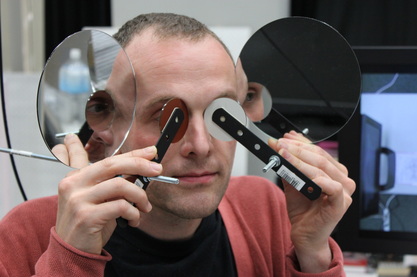
Active inference engages the entire hierarchy of cortical areas involved in sensory processing, including both feedforward and feedback projections ( Bar, 2009 Larkum, 2013 Shipp, 2016 Funamizu et al., 2016 Parr et al., 2019). In general, perception is thought to actively select plausible explanatory hypotheses, to predict the sensory evidence expected for each hypothesis from prior experience, and to compare the observed sensory evidence at multiple levels of scale or abstraction (‘analysis by synthesis,’ ‘predictive coding,’ ‘hierarchical Bayesian inference,’ Yuille and Kersten, 2006, Rao and Ballard, 1999, Parr and Friston, 2017b, Pezzulo et al., 2018). In natural settings, perception explores alternative plausible causes of sensory evidence by active readjustment of sensors (‘active perception,’ Mirza et al., 2016 Yang et al., 2018 Parr and Friston, 2017a). Numerous illusions in visual, auditory, and tactile perception – all subjectively compelling, but objectively false – attest to this extrapolation beyond the evidence. In deducing the likely physical causes of sensations, perception goes beyond the immediate sensory evidence and draws heavily on context and prior experience ( von Helmholtz, 1867 Barlow et al., 1972 Gregory, 1980 Rock, 1983). Thus, multistable perception may reflect decision-making in a volatile world: integrating evidence over space and time, choosing categorically between hypotheses, while concurrently evaluating alternatives. Moreover, the proposed out-of-equilibrium dynamics satisfies normative constraints of continuous decision-making.
Binocular rivalry serial#
Previously unreported features in the serial dependencies of perceptual alternations compellingly corroborate this mechanism. As soon as one group dominates perception, feedback inhibition suppresses supporting evidence. Independent elements accumulate visual evidence at one level, while groups of coupled elements compete for dominance at another level.

The constitutive elements of this model idealize the metastability of cortical networks. Using binocular rivalry, we show that many aspects of this perceptual dynamics are reproduced by a hierarchical model operating out of equilibrium. The interval statistics of these alternations exhibits quasi-universal characteristics, suggesting a general mechanism.


In ambiguous or conflicting sensory situations, perception is often ‘multistable’ in that it perpetually changes at irregular intervals, shifting abruptly between distinct alternatives.


 0 kommentar(er)
0 kommentar(er)
